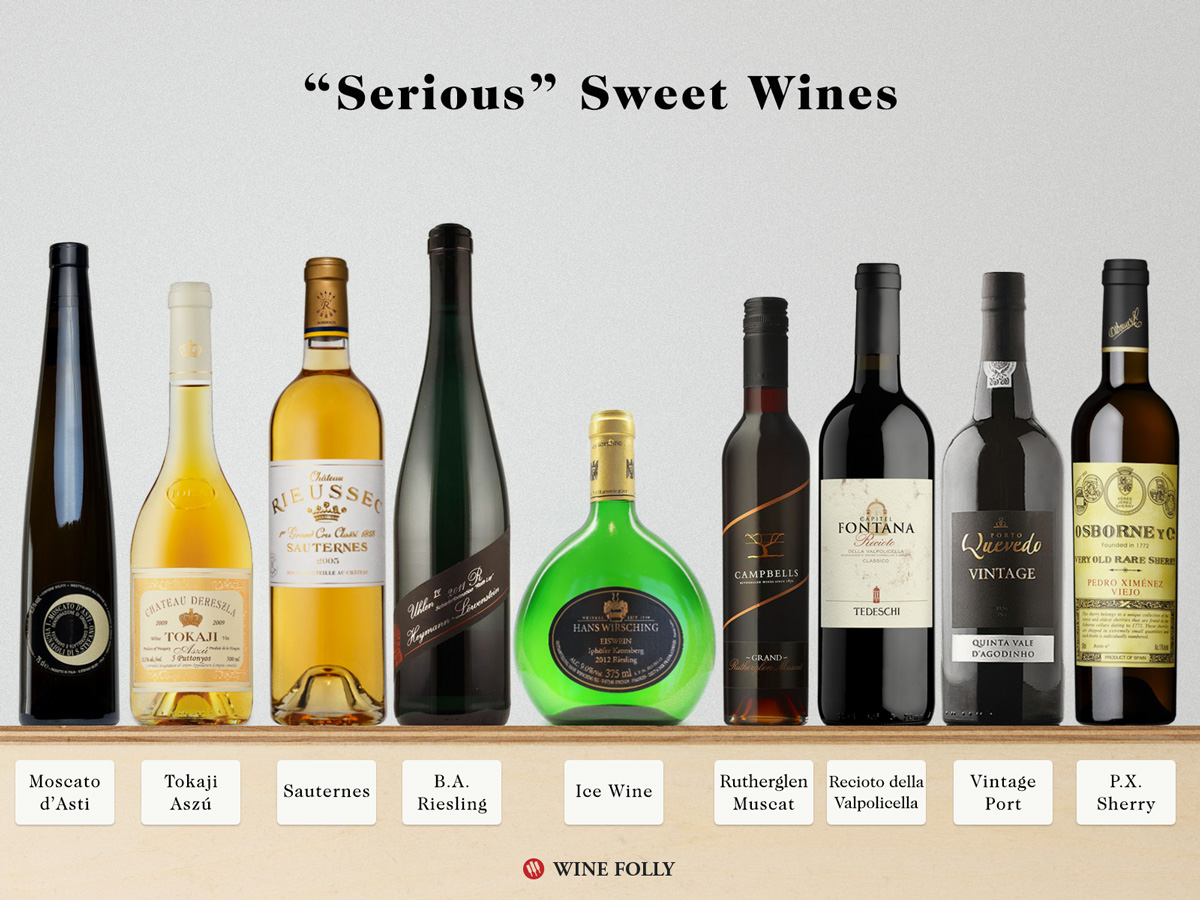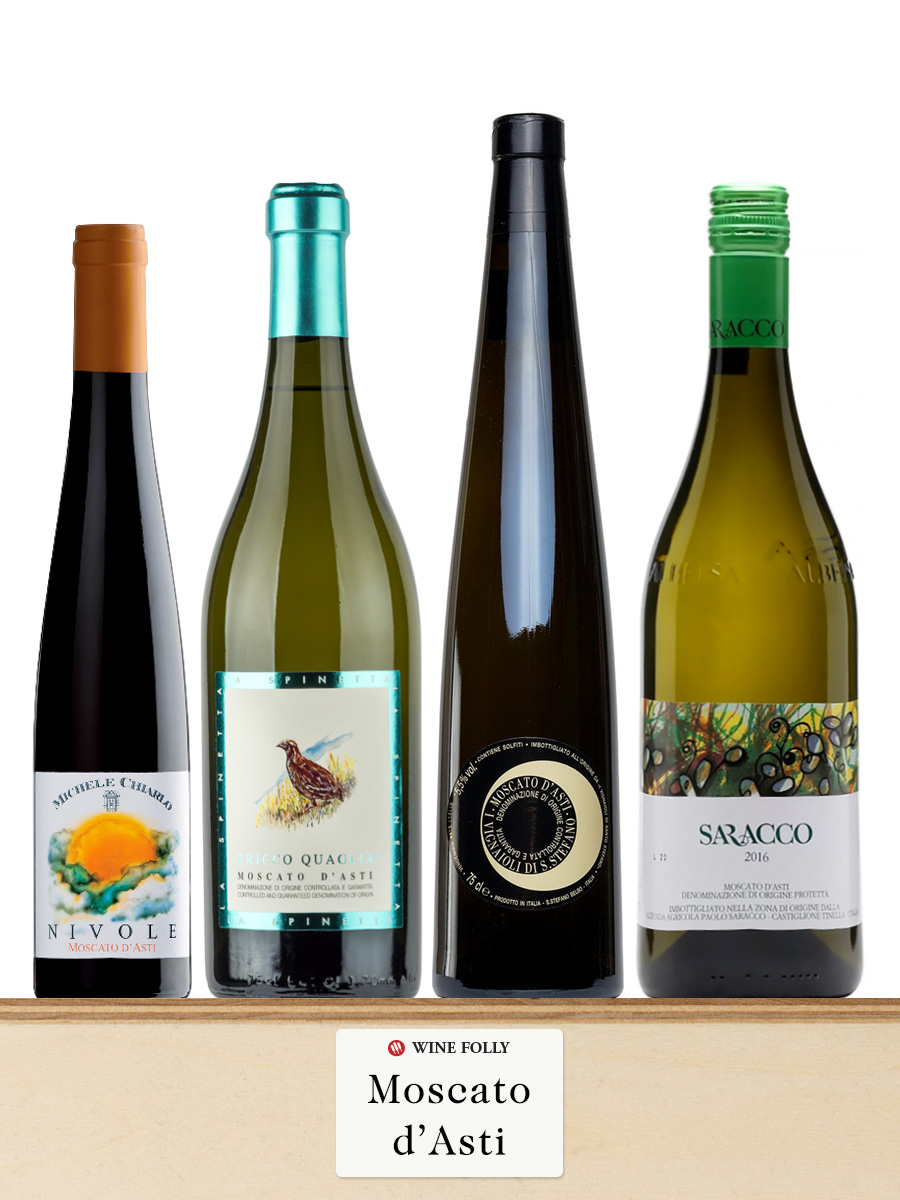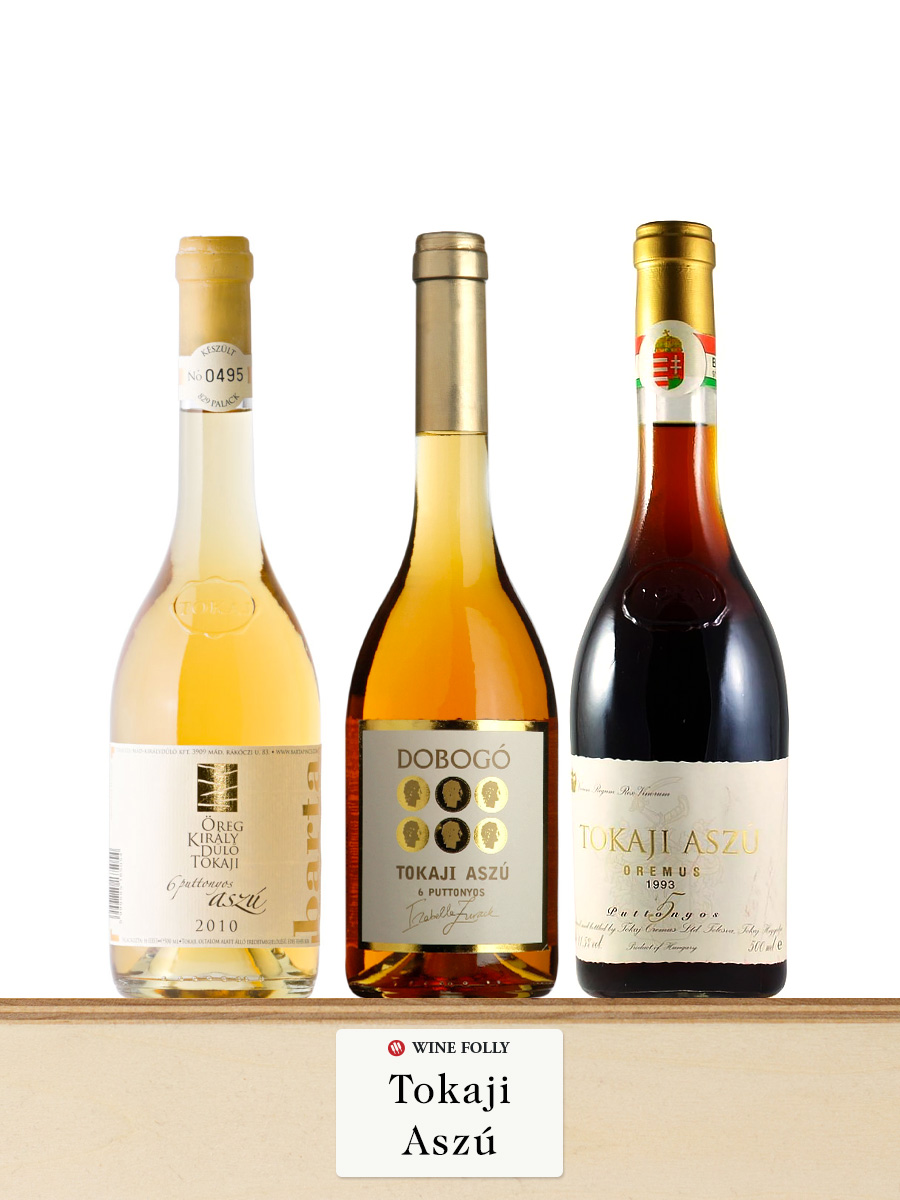Exploring the world of fine wine is tricky if you have a sweet tooth, as the most familiar and “serious” wines aren’t necessarily sweet. Historically speaking, though, sweet wines were once the most coveted style of wine in all the world. No really, it’s true!
Your love for sweet wine has just been validated.

Here’s a fun fact for you: the world’s first demarcated wine region wasn’t Bordeaux, nor was it Champagne, it was a region in Eastern Hungary that specializes in sweet white wines called Tokaji (“toe-kiy”). It was officially recognized in 1737.
Interestingly enough, some of today’s most important red wine regions used to be known for sweet wine production. For example, in the 1860s, Barolo was much sweeter than it is today.
Here are nine wines you’ll want to try. They prove sweet wines are among the finest wines of the world.
Table of Contents
- Moscato d’Asti – a delicately sparkling Italian delight.
- Tokaji Aszú – a rare Hungarian specialty.
- Sauternes – Bordeaux’s famed sweet white.
- BA and TBA Riesling – Germany’s finest sweet Rieslings.
- Ice Wine – a super rare wine only made when grapes freeze.
- Rutherglen Muscat – one of the world’s sweetest wines.
- Recioto della Valpolicella – an Italian specialty that pairs with chocolate.
- Vintage Port – Portugal’s collectible sweet red that lasts decades.
- P.X. Sherry – the sweetest wine in the world.
-

Moscato d’Asti
(“moe-ska-toe daas-tee”) You haven’t really had Moscato until you’ve tried Moscato d’Asti. d’Asti is truly the original wine of Piedmont, Italy.
The Piedmont region is famous for Nebbiolo (like Barolo), but Moscato has been cultivated here since Roman times. Wines are “frizzante” (as in, somewhat sparkling) or “spumante” (full sparkling). Expect to smell amazing aromas of perfume, Asian pear and peach. Moscato d’Asti is the perfect birthday cake wine and honestly, you don’t even need the cake.
Sweetness level: 90–120 g/L residual sugar
Expect to spend: ~$15
-

Tokaji Aszú
(“toe-kiy at-sue”) This white wine is made with a rare white grape called Furmint. These grapes are picked once they’ve been infected with a special type of rot (Botrytis cinerea aka “noble rot”). While this sounds gross, the result is a richly sweet golden white wine with subtle flavors of saffron and ginger. Tokaji Aszú might just be the closest thing to drinking stars.
Sweetness level: 60–450 g/L residual sugar
Expect to spend: ~$50
-

Sauternes
(“so-turn”) In Bordeaux, there is an area along the Garonne river that gets super moist and covered with fog – ideal conditions for developing the beneficial rot, Botrytis cinerea. Sémillon, Sauvignon Blanc, and Muscadelle grapes are blended together and wines reveal complex flavors of quince, marmalade, honey, ginger, and spice.
Sweetness level: 120–220 g/L residual sugar
Expect to spend: ~$25
-

Beerenauslese Riesling
(“bear-in-ohss-lay-say” or “BA” for short) There are several classifications of German Riesling and the Beerenauslese level is where things start to get serious (and seriously sweet).
In order to produce the sweetest wines, grape harvesters will hand select grape bunches affected with noble rot. These wines are sweet and textured, like honeycomb, but with tingly acidity. You can also seek out Trockenbeerenauslese (aka “TBA”) – the most precious of them all.
Sweetness level: 90–220 g/L residual sugar
Expect to spend: ~$90
-

Ice Wine
When making ice wine (in German, “eiswein”), the grapes are left on the vine into the winter until it freezes. The grapes are pressed while still frozen so only the sugar oozes out. This syrupy liquid is then fermented into wine.
The best ice wines are typically made with Riesling and Grüner Veltliner grapes and come from places where it gets cold enough to freeze. The world’s leading producer of ice wine is Canada, followed by Germany and Austria.
Sweetness level: 120–220 g/L residual sugar
Expect to spend: ~$30
-

Rutherglen Muscat
There is a rare, red-colored variant of the Moscato grape (aka Muscat Blanc à Petit Grains) that grows in Victoria, Australia. The grapes are harvested late in the season when they become dried and partially brown so that sweetness is more concentrated.
The result is a wine with rich aromas of toffee, dried strawberries and hazelnuts that’s hauntingly sweet. Despite the greatness of this wine, it’s shockingly cheap. One of the best values in super fine wines. This is Rutherglen Muscat.
Sweetness level: 200–400+ g/L residual sugar
Expect to spend: ~$18
-

Recioto della Valpolicella
Valpolicella is the wine region around Verona, Italy that is famous for its bold, dry Amarone wines. Originally however, Valpolicella was known for Recioto.
Recioto della Valpolicella (“Retch-ee-oh-toe”) uses the same passito process as Amarone where grapes are dried on mats to concentrate sugars. The major difference between Amarone and Recioto is that the fermentation stops before the sugars have all fermented. Drinking Recioto is like liquid chocolate covered cherries.
Sweetness level: 110–200 g/L residual sugar
Expect to spend: ~$60
-

Vintage Port
The Douro Valley in Portugal was the world’s second official wine region (demarcated in 1757) and it’s the home of true Port wine. While most of the Port wine we see in stores is basic quality Ruby Port, certain years are so good that they are recognized as “vintage” years.
Vintage Port is a substantial step up <in terms of quality and you can taste it. Additionally, Vintage Port is designed to cellar for 50–100 years.
Sweetness level: ~90–140 g/L residual sugar
Expect to spend: ~$50
-

PX – Pedro Ximénez
(“pay-dro hym-men-nez”) No, Pedro is not a guy, it’s a rare white wine grape from Southern Spain!
The process of making PX (a sweet Sherry) involves allowing the wine to age in barrels for many years, causing the liquid to become brownish-black in color. Over time the fluid in the wine slowly evaporates (both water and alcohol), which concentrates the sugar level.
Sweetness level: 300+ g/L residual sugar
Expect to spend: ~$50
